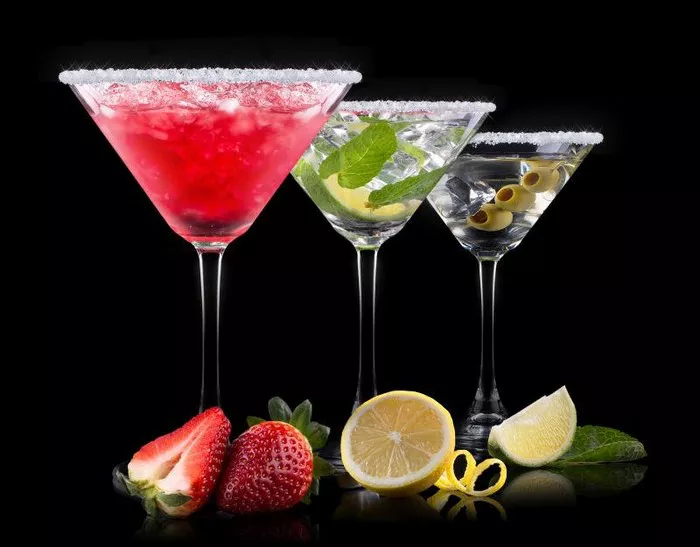As the holiday season rolls around, the air is filled with the scent of freshly baked cookies, the warmth of crackling fires, and the joyous sounds of laughter. Amidst the merriment and gatherings, one element that often takes center stage is the Christmas cocktail. A well-crafted cocktail has the power to elevate the festive spirit, and there’s one concoction that consistently captures the essence of the season—eggnog. In this article, we’ll delve into the rich history, enchanting flavors, and enduring popularity of eggnog as the most beloved Christmas cocktail.
The Origins of Eggnog
Eggnog’s origins trace back centuries, intertwining with the rich tapestry of Christmas traditions. The drink’s name is derived from its key ingredients: eggs and dairy, which come together to create a creamy and indulgent base. The earliest versions of eggnog emerged in medieval Europe, where it was often enjoyed as a winter punch laced with spices and spirits. As this festive libation made its way across the Atlantic to the American colonies, it underwent various adaptations to suit local preferences and ingredients.
1. The Essence of Comfort: Flavors That Define Eggnog
At the heart of eggnog’s appeal lies its comforting and indulgent flavors. The velvety texture, reminiscent of a melted custard, is achieved through the careful combination of eggs, milk, and cream. The taste is further enriched by the addition of spices such as nutmeg, cinnamon, and sometimes cloves, which infuse the drink with a warm and aromatic essence. The subtle sweetness from sugar or other sweeteners rounds out the profile, creating a symphony of flavors that dances on the palate.
2. The Spirit of Celebration: Alcohol in Eggnog
One of the distinguishing characteristics of eggnog is the inclusion of alcohol, which not only imparts a spirited kick but also adds depth to the overall experience. Traditional spirits like rum, brandy, and whiskey are often used to fortify the drink. The choice of alcohol can significantly influence the flavor profile, with each spirit contributing its own unique notes and nuances. The marriage of alcohol and eggnog creates a harmonious blend that warms both the body and the soul, making it a quintessential choice for festive gatherings.
3. The Art of Crafting: Homemade vs. Store-Bought
When it comes to enjoying eggnog, individuals are often faced with a choice: homemade or store-bought. Both options have their merits, and the decision ultimately depends on factors such as convenience, time, and personal preference.
Homemade Eggnog: Crafting eggnog from scratch allows for full control over the ingredients, flavors, and alcohol content. The process involves whisking together eggs, sugar, and milk, and then slowly heating the mixture while constantly stirring to create a rich custard base. Spices and alcohol are added, and the eggnog is chilled before serving. Homemade eggnog provides a personalized touch and the satisfaction of creating a traditional holiday treat.
Store-Bought Eggnog: Commercially prepared eggnog offers convenience, eliminating the need for time-consuming preparation. Ready-to-pour eggnog can be found in grocery stores, often available in both alcoholic and non-alcoholic versions. While store-bought eggnog may lack the customization of homemade varieties, it provides a quick and easy option for those seeking the classic flavors without the fuss.
4. The Symbol of Togetherness: Eggnog’s Social Significance
Beyond its delectable taste, eggnog holds a special place in the hearts of many due to its association with togetherness and conviviality. Sharing a glass of eggnog with loved ones, whether at intimate family gatherings or lively holiday parties, has become a cherished tradition for many. The act of raising a cup of eggnog in a toast symbolizes the spirit of unity and celebration that defines the holiday season.
5. The Evolution of Variations: Modern Twists on a Classic
While the traditional recipe for eggnog remains a steadfast favorite, the culinary world’s penchant for innovation has led to the emergence of numerous creative variations. These modern twists aim to capture the essence of eggnog while introducing unexpected flavors and ingredients.
Spiced Eggnog: Infusing eggnog with additional spices like cardamom, ginger, and allspice can create a more complex and aromatic flavor profile. These spices complement the existing nutmeg and cinnamon notes, elevating the overall taste experience.
Flavored Liqueurs: Experimenting with flavored liqueurs, such as coffee liqueur or hazelnut liqueur, can add an intriguing layer of depth to eggnog. These liqueurs infuse the drink with subtle undertones that harmonize with the traditional flavors.
Vegan Eggnog: For those seeking an alternative to the traditional dairy-based version, vegan eggnog offers a plant-based alternative. Ingredients like almond milk, coconut milk, or cashew milk can be used to create a creamy base, while spices and sweeteners maintain the familiar taste.
Conclusion
As the holiday season unfolds, the allure of eggnog remains undeniable. Its rich history, indulgent flavors, and associations with warmth and togetherness continue to make it a staple at Christmas celebrations. Whether enjoyed by a roaring fireplace, under twinkling lights, or amidst the joy of a family gathering, a glass of eggnog captures the essence of the season in every sip.
In a world that constantly evolves, eggnog stands as a timeless testament to the power of tradition and the magic of flavors that transcend generations. So, as you raise your glass to toast the holiday spirit, take a moment to appreciate the enchanting journey that each sip of eggnog offers—a journey filled with history, camaraderie, and the unmistakable taste of Christmas joy.


